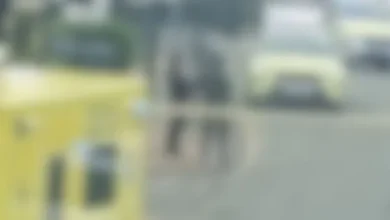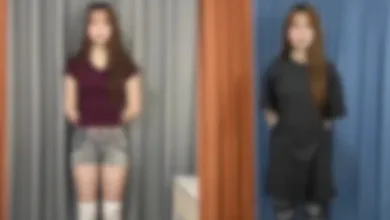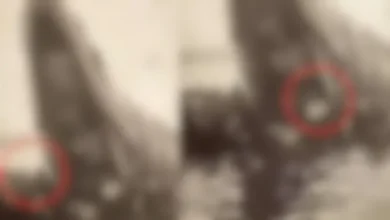Twilight Zone Accident Video: A Spine-chilling Glimpse Into The Unknown
The twilight zone accident video serves as a stark reminder of the tragic events that unfolded during the filming of Twilight Zone: The Movie in 1982. This haunting footage captures the moment when a helicopter crash claimed the lives of actor Vic Morrow and child actors Myca Dinh Le and Renee Shin-Yi Chen. Join Royal Clinic as we delve into the details of this heartbreaking incident, exploring its aftermath, legal proceedings, and the lasting impact it had on the filmmaking industry.

I. The Tragic Twilight Zone Accident: A Deeper Look
The Filming of a Fateful Scene
On July 23, 1982, a fateful scene was being filmed for Twilight Zone: The Movie. The scene involved a helicopter flying low over a rice paddy with two child actors, Myca Dinh Le and Renee Shin-Yi Chen, running alongside. Tragically, the helicopter crashed, killing the two children and actor Vic Morrow, who was also on the ground. Six passengers aboard the helicopter were injured.
A Series of Unfortunate Events
The accident was a result of a series of unfortunate events. The helicopter was flying too low, and the pyrotechnics used to simulate gunfire caused the aircraft to lose control. The pilot, Dorcey Wingo, was also under the influence of alcohol and drugs.
| Victim | Age | Role |
|---|---|---|
| Vic Morrow | 53 | Actor |
| Myca Dinh Le | 7 | Child actor |
| Renee Shin-Yi Chen | 6 | Child actor |
A Lasting Impact
The Twilight Zone accident had a profound impact on the filmmaking industry. It led to the implementation of new safety regulations and procedures, including the use of stunt coordinators and the prohibition of children working in hazardous conditions. The accident also raised questions about the use of pyrotechnics and special effects on film sets.
“The Twilight Zone accident was a tragedy that could have been avoided. It led to important changes in the way that films are made, and it serves as a reminder of the importance of safety on set.”
II. Investigating the Circumstances: Unraveling the Causes
The Filming Location and Conditions
The Twilight Zone accident occurred at Indian Dunes in Valencia, California, during a night shoot. The scene involved a helicopter flying low over a rice paddy with pyrotechnics simulating an explosion. The location was chosen for its proximity to Los Angeles and its resemblance to Vietnam, where the scene was set.
On the day of the accident, weather conditions were poor, with low visibility and strong winds. The helicopter pilot, Dorcey Wingo, had expressed concerns about the safety of the scene, but he was overruled by the production team. Despite the hazardous conditions, the shoot proceeded.
Errors and Negligence
The investigation into the accident revealed a series of errors and negligence that contributed to the tragedy. The helicopter was overloaded, exceeding its maximum weight capacity. The pyrotechnics were not properly secured, and the special effects team failed to take adequate safety precautions.
Additionally, the production team ignored the pilot’s concerns about the weather conditions and pressed on with the shoot. These factors combined to create a perfect storm of negligence and recklessness that resulted in the tragic accident.
Mistakes that Led to the Tragedy
- Overloading the helicopter beyond its maximum weight capacity
- Improperly securing the pyrotechnics
- Ignoring the pilot’s safety concerns
- Pressing on with the shoot despite poor weather conditions
“The Twilight Zone accident was a preventable tragedy caused by a series of errors and negligence. The production team failed to take the necessary safety precautions, resulting in the deaths of three innocent people.” – National Transportation Safety Board (NTSB) report

III. Aftermath and Impact: Industry Overhaul and Safety Measures
The Twilight Zone accident video served as a catalyst for significant changes in the filmmaking industry. In the aftermath of the tragedy, stricter safety regulations were implemented, and filmmakers were required to adhere to more stringent guidelines to ensure the well-being of cast and crew. Safety coordinators became a standard on film sets, tasked with overseeing safety protocols and ensuring compliance with regulations.
Furthermore, the accident prompted discussions about the use of child actors in dangerous scenes. New guidelines were established to protect young performers, including restrictions on the types of stunts they could perform and the hours they could work. These changes have helped to create a safer environment for everyone involved in the filmmaking process.
| Safety Measure | Description |
|---|---|
| Safety coordinators | Oversee safety protocols and ensure compliance with regulations |
| Stricter guidelines for stunts | Define the types of stunts that can be performed and the conditions under which they can be executed |
| Restrictions on child actors | Limit the types of stunts they can perform and the hours they can work |

IV. Lessons Learned: Ensuring a Safer Filming Environment
Reevaluating Safety Protocols
The Twilight Zone accident prompted a thorough review of safety protocols in the film industry. Studios and production companies were urged to implement stricter guidelines and regulations to prevent similar tragedies. This led to the development of comprehensive safety manuals and training programs for cast and crew members.
Key Safety Measures:
- Enhanced risk assessments and hazard identification
- Rigorous training for stunt performers and special effects personnel
- Improved communication and coordination among departments
- Strict adherence to safety regulations and guidelines
Technological Advancements for Enhanced Safety
The film industry also embraced technological advancements to minimize risks and improve safety on set. These advancements included:
- Computer-Generated Imagery (CGI): CGI allowed filmmakers to create realistic and spectacular scenes without putting actors and crew in danger.
- Motion Capture Technology: This technology enabled actors’ performances to be captured and integrated into digital environments, reducing the need for risky stunts.
- Virtual Reality (VR) and Augmented Reality (AR): VR and AR technologies provided filmmakers with immersive tools to visualize and plan complex scenes, minimizing potential hazards.

V. Conclusion
The Twilight Zone accident video serves as a stark reminder of the importance of safety on film sets. The tragic loss of life during the filming of Twilight Zone: The Movie led to significant changes in industry practices and regulations, resulting in improved safety measures and a heightened awareness of potential hazards. While the accident remains a somber chapter in Hollywood history, its legacy lies in the lessons learned and the ongoing commitment to ensuring the safety of cast and crew members on film sets.



